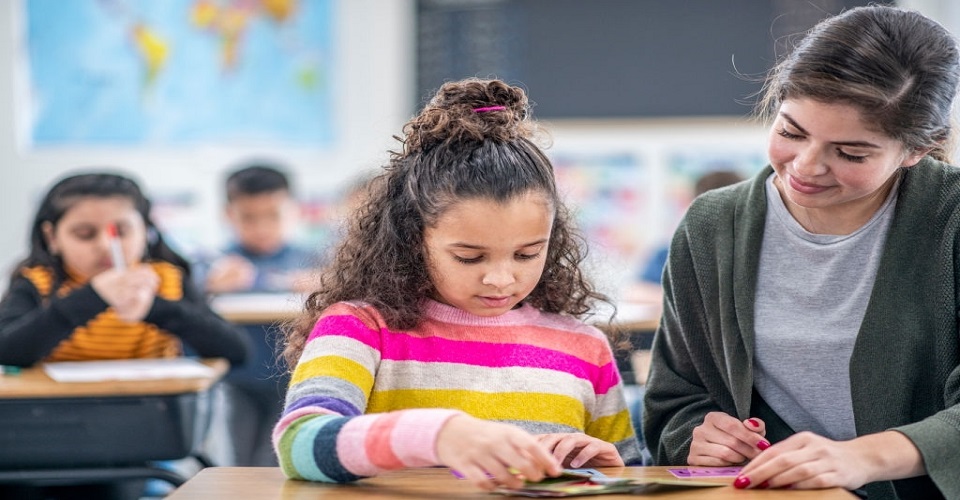8 Strategies for Managing Classroom Behaviour
15th February 2021
Classroom management is a burning issue for teachers all across the globe. Practising educators and nearly half of newly appointed teachers report that they “do not, at all, feel prepared” to handle troublemaking students. Lack of proper training comes with a cost, as teachers report losing valuable teaching time on average to behavioural disruptions on a regular basis, which adds up to roughly three weeks over the course of a year.
Recent research confirms that while negative management (warnings like “Stop talking!”) may temporarily halt misbehaviour, learners eventually became more prone to engage in disruptive behaviours. The research also stated that during the study, learners felt disengaged, had difficulty concentrating and weren’t able to effectively regulate their thoughts and emotions - a cycle that “actually increases students’ inappropriate behaviour,” the authors of a study explained.
So, instead of trying to handle disruptions after they have happened, it can be strategically effective to set up the classroom environment, in a way, in which such behaviours are less likely to occur. A 21st century teacher needs to be equipped with effective student counselling techniques to engage learners and to rule out any possibilities of disruptions.
Here are eight classroom strategies to effectively manage classroom behaviour, all backed by research.

1. Greeting learners at the door
Study says that greeting students at the door before starting the day, helped teachers in setting a positive tone for the rest of the day and to connect with them, thus boosting academic engagement by at least 20% while reducing disruptive behaviour and adding an hour (approx.) of engagement over the course of the day.
2. Strengthening relationships
Relationship building with students through strategies like greeting them at the door (as mentioned above) is a good start. It’s also necessary to maintain the same over the course of the school year. The stronger the relationship, the better it is for educators to understand students.
Some of the strategies for establishing, maintaining and restoring relationships include regular check on learners, and focusing on solutions instead of problems can, actually, reduce disruptions by up to 75%.
3. Model ideal behaviour
Make it a habit to demonstrate the kind of behaviour you want to see in learners, as studies show that demonstrating effectively teaches students how to act in various situations. A candid way to model certain behaviour is to arrange mock conversations with other teacher/s or student in front of the class. While doing so, ensure:
- To use polite language
- Maintaining eye contact
- Keeping phones away
- To let the other person speak
- To raise concerns about each other’s statements respectfully
4. Letting learners help in establishing guidelines
Encourage students to help you in setting classroom rules, as you will generate more interest from them rather than just telling them what they are allowed to and not. At the beginning of the session, discuss by asking students what they believe should and shouldn’t be done. At what points are talking in the class okay and not okay? What are the tolerable noise levels during classes? Having a discussion should lead to mutually-understood and respected expectations and the results might shock you as well.
5. Use reminders and cues
Give ample warning to older students if you need them to follow instructions. Reminders are helpful ways to encourage students to follow instructions without being over the top, controlling or forceful. E.g., if you are expecting a disruption, such as students being impatient after finishing an assignment early, give an early reminder of what they should be doing when they are done with their work.
6. Document the rules
Don’t let your mutually respected guidelines be forgotten. Print and distribute the list of rules that the generated from the class discussion (mentioned above). Go through the list along with your students as doing this would emphasize the fact that you respect their ideas and intend to adhere to them and expect the same from them. If you are feeling creative, you can paste the list of rules in the classroom for all to see.
7. Behaviour specific praise
It may seem absurd at first, but acknowledging positive behaviour and ignoring low-level disruptions can be effective and bring positive results than punishing or disciplining students. As a substitute of focusing on specific students, offer praise for the behaviour you are willing to reinforce in the class. E.g., “Excellent work submitting your assignments in time”.
It is also helpful to avoid using the word don’t, students are more likely to listen to instructions that are justifying and include clear reasons.
8. Actively supervise
Your presence is very crucial in maintaining classroom and its management and in the effective delivery of instruction, and it’s a skill that can be developed with effort. Understandably, it’s enticing to sit behind the desk and grade papers, however, that’s also an opportunity for your students to get distracted and be disruptive. What you can do? Be active! Pace around the room, check in on student progress, and ask questions. It’s not about policing your students, but more about interacting with them.
If you have undergone an effective counselling training for teachers, then implementing these strategies may work especially well for individual students, and you would be able to see similar success by using them in classes as well.
Written By : Ipsita Roy